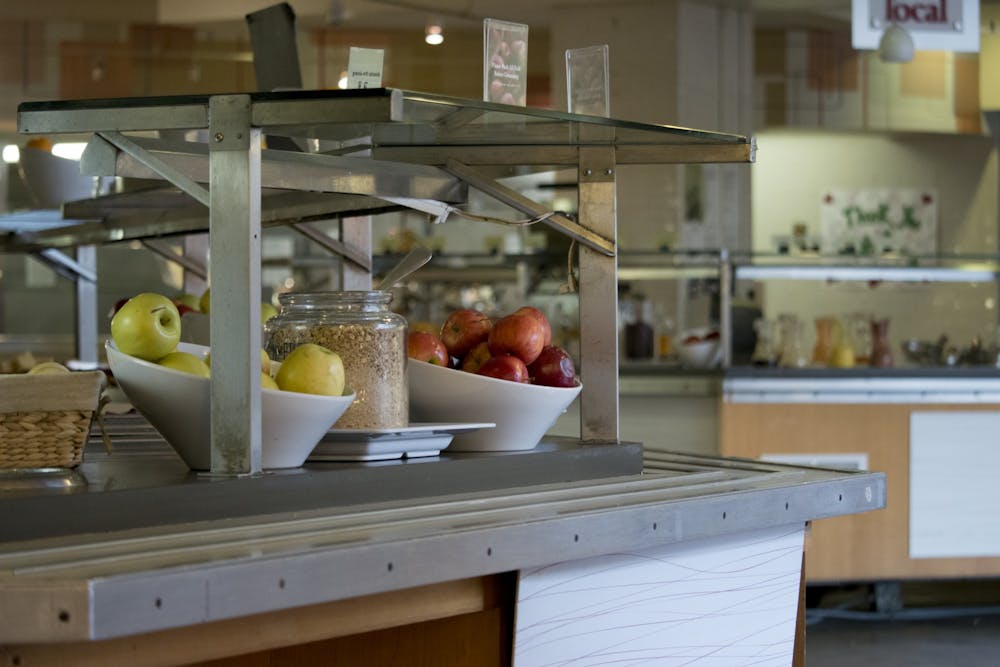
When the average person is asked what the most important factors are for a football team’s success, they may say a variety of things ranging from quarterback play to punt returns to coaching.
However, they are likely to never mention the factor that fuels the success of every team’s offensive line: eating.
For offensive linemen, maintaining the right weight during the season can make all the difference in their ability to perform consistently from week to week. While most would assume that linemen focus solely on lifting the heaviest weights and eating as many calories as they can, this could not be farther from the truth.
“[It’s] a more holistic approach to strength training and conditioning,” rising senior offensive lineman Dan Beaver said.
Beaver stands at 6'5", 275 pounds and has appeared in every game for the Quakers over the last two seasons.
“It’s not just about what we do in the weight room. There’s a whole lifestyle and routine to optimize what we end up doing on the field.”
Maintaining a routine that optimizes one’s ability to perform each week can be challenging for any athlete. But when that athlete is playing Division I football while also balancing the academic demands of the Ivy League as well as the financial constraints that come with being a college student, the challenge becomes even tougher.
Luckily for Penn’s line, there is a way to both navigate the demands of an athlete's schedule and still maintain the proper eating regimen.
“What I ended up doing was going to the nutritionist,” Beaver said. “She and I created a nutrition plan specific to me, [based on] what you are looking to do, what does your schedule look like, and what food options do you have.”

The question of how much offensive linemen eat has been often asked and followed by some speculation. In most cases, there is a high chance that this speculation never includes a carefully curated nutrition plan that meets the demands of a student-athlete’s busy schedule while also optimizing their performance.
However, in the case of Penn offensive lineman, the answer to the question is a lot more calculated than Penn fans would originally think.
“I’m eating three full meals a day, and on top of that I have two smaller, protein-oriented snacks that are built in throughout the day,” Beaver said. “It is definitely a lot of eating, but [also] picking foods that might not be super high in calorie but [that] have that protein component to build muscle and [protect against] the toll of practice and competing on my body.”
As expected, the average offensive lineman eats a lot on a given day. NFL lineman reportedly eat around 8,000 calories per day, more than four times the average recommended intake.
However, everything they eat is thought of as fuel for their body. By looking at food as a form of fuel and nourishment, Penn athletes are able to focus on making sure that their bodies are prepared for the toll of a full week of practice, classes, homework, and games.
In addition to meeting the nutritional demands of their eating regimens, student-athletes must also overcome an additional challenge: figuring out where to eat.
Most student-athletes simply do not have the time to shop for, prepare, and eventually cook their own meals each day. At the same time, many of them also are unable to spend a lot on groceries from week to week.
Some may ask how athletes manage to find properly cooked meals that satisfy the demands of their nutritional programs without taking up too much time. The answer: dining halls.
“I personally did a lot of trips to the dining halls where you use the swipe and get the buffet-style food options,” Beaver said. “In terms of the volume of food that I am eating, my best option in terms of being cost-effective is using the dining halls for those big meals and then supplement with the snacks that I can purchase on my own.”
For anyone, sticking to an eating regimen that meets the proper nutritional requirements is a tough proposition. Time and cost constraints make it even more challenging for athletes. However, Penn’s offensive line proves that with the right support system and the right amount of prior planning, it is something that can be both achieved and optimized.
Following the Ivy League’s recent announcement on the cancellation of fall athletics, it may be a while until the Red and Blue compete again. But when the Quakers eventually do take the field, fans can expect that their athletes, especially the offensive line, have done their part in the kitchen so that they can also do their part on the field come game day.
The Daily Pennsylvanian is an independent, student-run newspaper. Please consider making a donation to support the coverage that shapes the University. Your generosity ensures a future of strong journalism at Penn.
Donate






